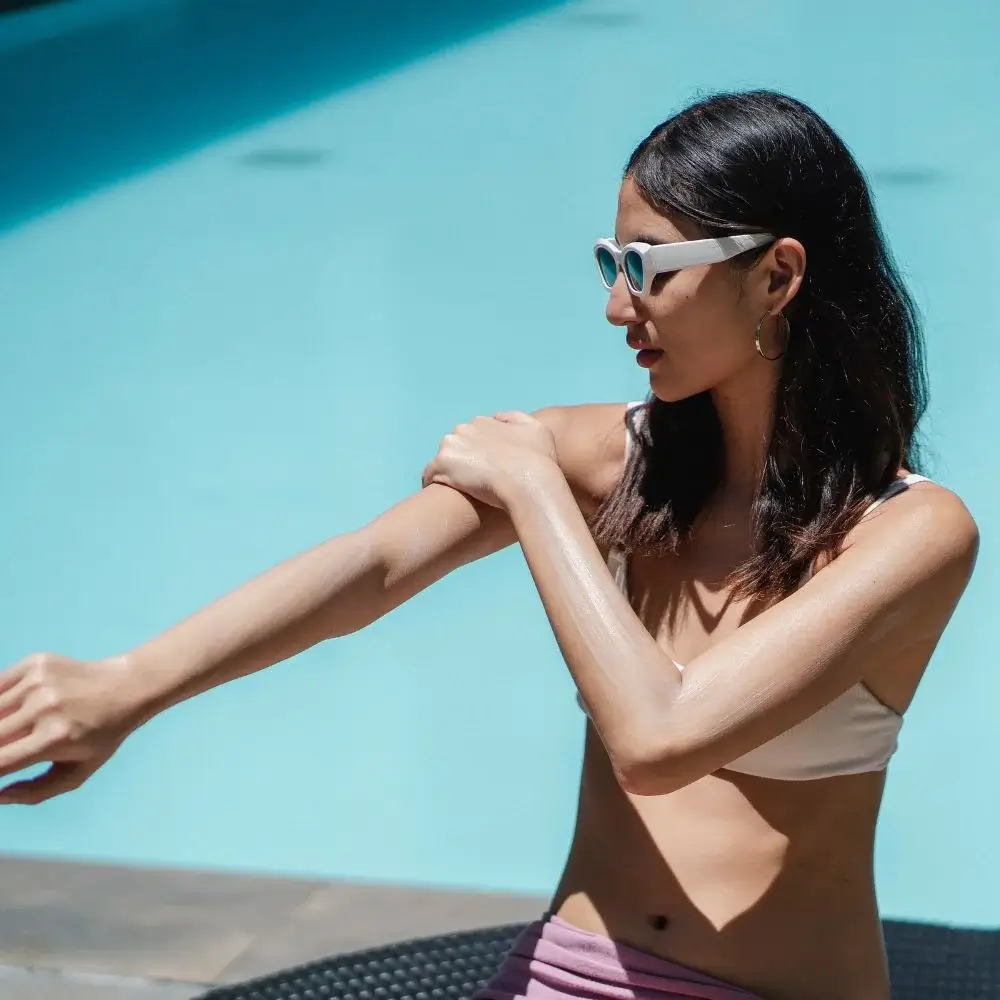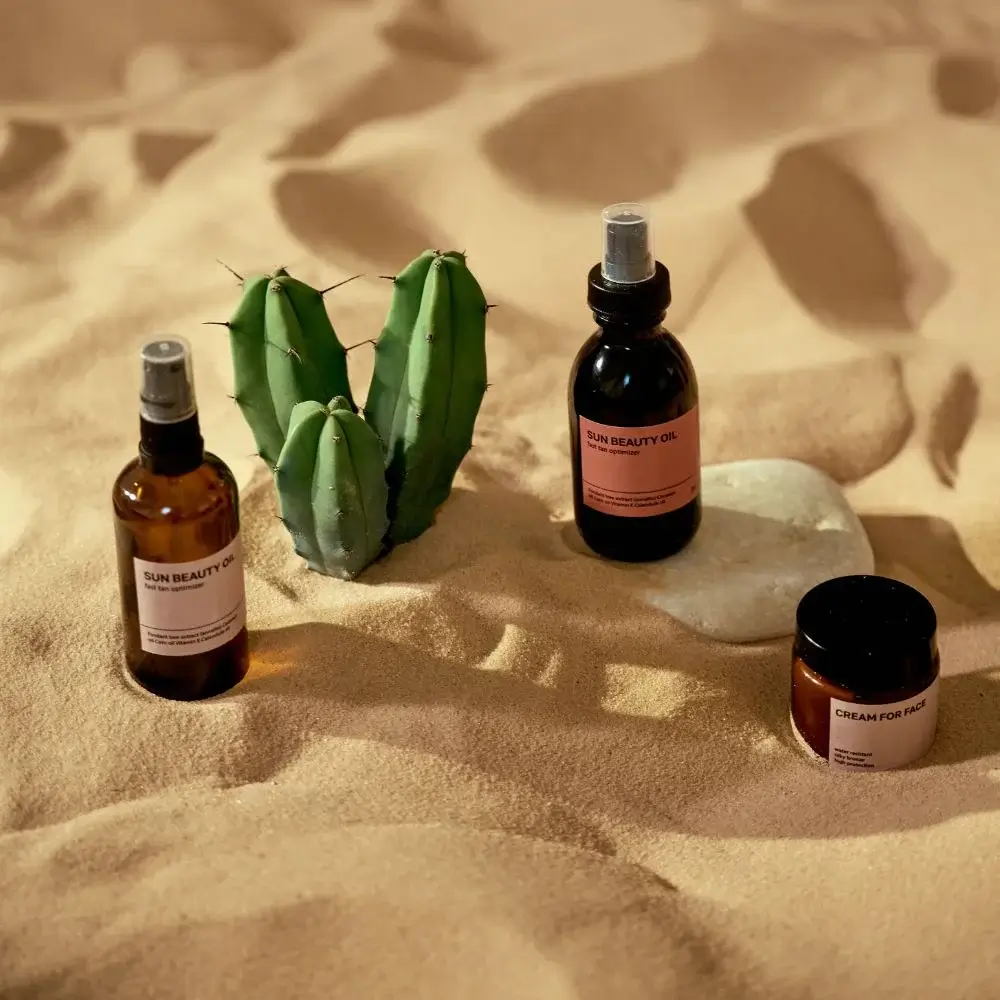Spending time under the sun is one of the most common things we love to do in the summer. However, tanning can lead to skin damage, harming our health. With this in mind, choosing the proper SPF is crucial when hitting the beach or lounging by the pool. While a high SPF can protect you from sunburn, it may also prevent achieving your desired tan. So, how can you choose the correct SPF for your tanning goals? As a beauty editor, let me share some tips and tricks for finding your perfect match.
Understand SPF levels
Sun Protection Factor (SPF) is a rating given to a product that measures its ability to screen or block the sun's ultraviolet B (UVB) rays, which are the primary cause of sunburn. The higher the SPF level, the more protection it provides, with SPF 15 blocking 93% of UVB rays, SPF 30 blocking 97%, and SPF 50 blocking 98%. However, going above SPF 50 does not significantly increase the protection level.
Know your skin type
Different skin types react differently to the sun and, therefore, require a different level of SPF. Fair skin burns quickly and often, while darker skin needs more exposure time to achieve a tan. If you have fair skin, it’s best to opt for higher SPF levels, while those with darker skin can go for lower SPF levels. Further, If you have sensitive skin, water-resistant sunscreens are a great option that provides other protection.
Consider your tanning goals
It's essential to consider your tanning goals when choosing the proper SPF. If you plan to spend long periods of time under the sun, use an appropriate level of protection that will allow you to enjoy the sun while maintaining skin health. For a healthy tan, use an SPF 15-30, which can help you avoid sunburn while allowing your skin to get a bit of color. But if you want a deeper, more long-lasting tan, it's safe to go slightly lower on the SPF scale and use an SPF 8-12.
Look for broad-spectrum protection
Along with the proper SPF, choosing a sunscreen that protects your skin from ultraviolet A (UVA) rays is essential. Unlike UVB rays, UVA rays penetrate deeper into the skin and can cause long-term skin damage. Similarly, be sure to pick a water-resistant, non-greasy sunscreen that won’t clog your pores. This way, you can enjoy the sun while keeping your skin healthy and happy.
Apply sunscreen properly
No matter which SPF you choose, applying sunscreen correctly is key. It should be applied at least 15-20 minutes before sun exposure and reapplied every 2 hours or after swimming and sweating. The amount you apply matters too. Experts suggest using at least one ounce - roughly the size of a shot glass - for each application and spreading it evenly over the skin.
Choosing the suitable SPF for tanning requires a bit of research and an understanding of your skin type and tanning goals. Now that we know all about SPF levels, tanning goals, and the importance of broad-spectrum protection, you can enjoy your time under the sun without worrying about skin damage. Apply your sunscreen correctly, reapply regularly, and always cover up and seek shade if you start feeling skin irritation. Remember, a healthy tan is a happy tan!
As beauty lovers know, achieving that perfect sun-kissed glow can be difficult. Between worrying about harmful UV rays and finding the best SPF for tanning, it's enough to make your head spin. That's where our friends at Beauty Editors come in. They have done the research and found you the best SPF for tanning. No more sifting through endless options at the drugstore or guessing which one will leave your skin feeling greasy. Just click the link and let Beauty Editors guide you to your next favorite best SPF for tanning. We promise your skin (and your glow) will thank you.
What are the different SPF levels available for tanning?
SPF levels for tanning typically range from 2 to 50 or higher. Lower SPF values like 2 to 15 offer minimal protection and suit individuals who tan easily. Moderate SPF levels of 15 to 30 provide a good balance between protection and achieving a tan. Higher SPF levels, such as 30 to 50 or above, offer more excellent sunburn protection but may reduce the tanning process. It is essential to consider your skin type, sun exposure duration, and intensity of sunlight when choosing the appropriate SPF level for your tanning needs.

What is the difference between physical and chemical sunscreens?
Physical sunscreens contain mineral-based ingredients like zinc oxide or titanium dioxide that form a protective barrier on the skin, reflecting and scattering UV rays away from the skin's surface. Chemical sunscreens, on the other hand, use organic compounds that absorb UV rays and convert them into heat, dissipating them from the skin. Physical sunscreens are generally considered gentler on the skin, less likely to irritate and provide immediate protection upon application.

What are the key ingredients to look for in a tanning SPF?
When choosing a tanning SPF, looking for key ingredients such as avobenzone, octisalate, octocrylene, and oxybenzone is essential. These ingredients effectively absorb or block UVA and UVB rays, providing broad-spectrum protection. Antioxidants like vitamin E or green tea extract can help neutralize free radicals generated by sun exposure, providing an added layer of protection and nourishment to the skin. Using sunscreen with these ingredients is advisable to ensure comprehensive coverage and skin care during tanning.

How does SPF work to protect the skin during tanning?
SPF (Sun Protection Factor) works by extending the time it takes for the skin to burn when exposed to the sun's UV rays. It measures the amount of UVB radiation blocked by the sunscreen. For example, an SPF 30 sunscreen will provide 30 times the protection against sunburn compared to not wearing any sunscreen. However, it's important to note that SPF does not indicate protection against UVA rays, which can cause long-term skin damage.

How should I apply tanning SPF for optimal coverage?
To ensure optimal coverage:
- Apply tanning SPF generously and evenly to all exposed skin at least 15 to 30 minutes before sun exposure.
- Cover areas often overlooked, such as the ears, back of the neck, and tops of the feet.
- Remember to reapply every two hours or immediately after swimming or excessive sweating.
- Remember to pay attention to sensitive areas like the lips and use a lip balm with SPF.
It's crucial to follow the application instructions provided by the sunscreen manufacturer to maximize the product's effectiveness and protect your skin adequately.
Should I use a higher SPF for my face compared to my body?
While there is no hard and fast rule, using a higher SPF for your face is generally recommended compared to your body. The skin on your face is often more exposed to the sun and susceptible to damage. Facial skin is typically more delicate and prone to pigmentation and premature aging. Considering these factors, it's advisable to opt for a broad-spectrum sunscreen with an SPF of at least 30 For your face. However, it's important to note that using a higher SPF alone is insufficient to protect your face adequately.







